An aurora is a natural light that displays in the sky on the north pole (aurora borealis) and on the south pole (aurora australis).
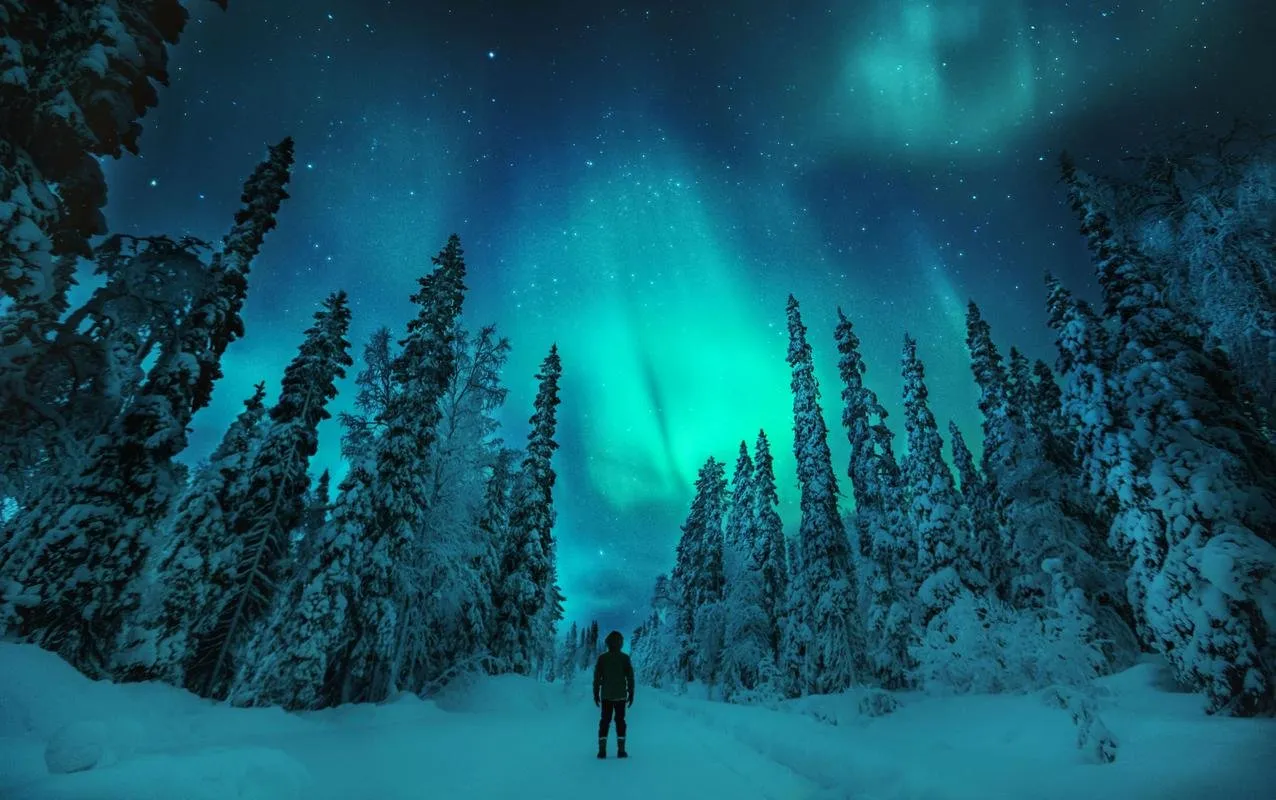
Aurora Borealis seen from Finland
What Causes Auroras ?
It all starts on the sun, our star is like a power plant to the solar system we live in, so it must have to create its own energy, deep inside of its core the temperature is over 15 million degrees Celsius, and due to gravitational attraction, the pressure inside the core of the sun is so big, so hydrogen atoms will compress and fuse together in order to create helium, something know as nuclear fusion. This nuclear reaction will release energy, and light will pass from the core of the sun to its outer layers, and the heat will move to its surface. The nuclear fusion will cause the electron and the proton to depart from the sun's corona (the corona is the outer layer of the sun), and they will group together forming an electrically charged gas called plasma (we know it as the solar wind), the gravity of the sun cannot contain these particles because they are too fast, after 6 hours of its depart, the electrically charged gas will reach the first planet in our solar system mercury, and after 12 hours it will reach venus, after 18 hours, the solar storm will reach the earth, but it is different on our planet, the earth magnetic field protects us from the storm, it reacts as an invisible shield, the magnetosphere will send the particles around the earth in detour. The electrons and protons meet with oxygen and nitrogen atoms, from 30 to 300 km above the surface of the earth, and the sun's particles give their energy to the earth oxygen and nitrogen atoms, so particles in the atmosphere will emit photons and that's what causes the northern lights or auroras at the poles.
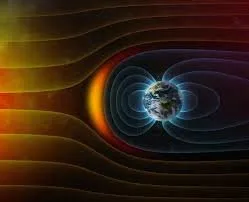
Earth's magnetic field protecting us from solar wind
Aurora Colors
The colors of an aurora depend on the wavelength of the atoms photons. Oxygen particles are responsible for the green or orange-red, while Nitrogen particles are responsible for the blue or red colors. While auroras are seen in both the south and the north pole, they can appear in daytime or in nighttime, but of course it would be more visible at night.
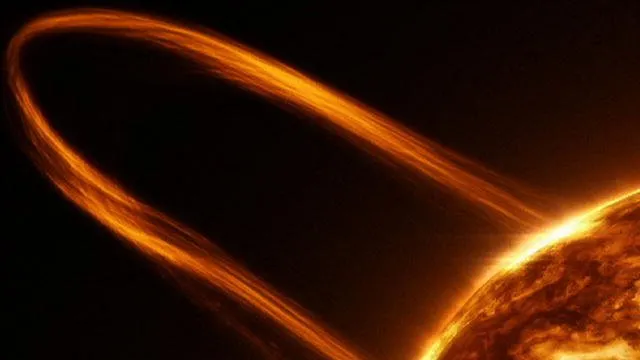
Electrically charged gas (also know as solar wind) ejected from the sun
Aurora Noise
Yes auroras make noise too, it is similar to a hissing or a cracking noise, just 70 meter over the ground, scientists still don't know how exactly the sound is created, but based on their research the electrically charged particles that come from the sun to create the polar lights, may be the same particles that cause these strange noises !
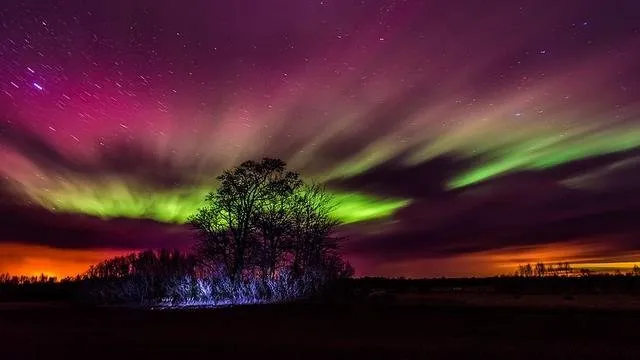
Aurora Borealis seen from Estonia in 14/12/2015
Where Can We Watch Auroras
This whole process is occurring on the magnetic poles, and as we know the land is much bigger in the northern hemisphere than the land in the southern hemisphere, so it would be much easier to see an aurora on the north pole which would be called Aurora Borealis. The best places to watch the aurora borealis is North America and Europe. In north America you can see the aurora from Alaska and the north western parts of Canada. In Europe Scandinavia, Norway, Sweden and Finland could be the best views of the aurora borealis together with Iceland and Greenland. Beside watching the aurora borealis which is on the north pole, you still catch the aurora australis in cases of a heavy solar storm in south Australia.
Follow @universe.laws for more !
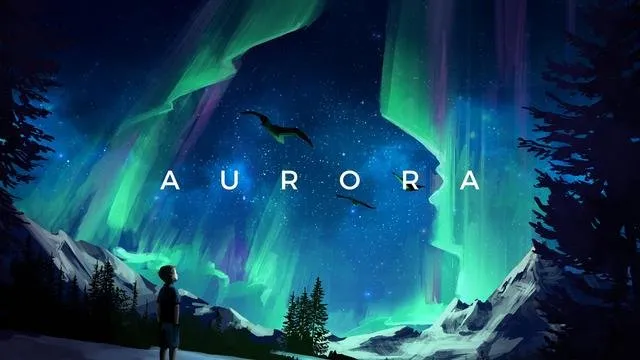
References